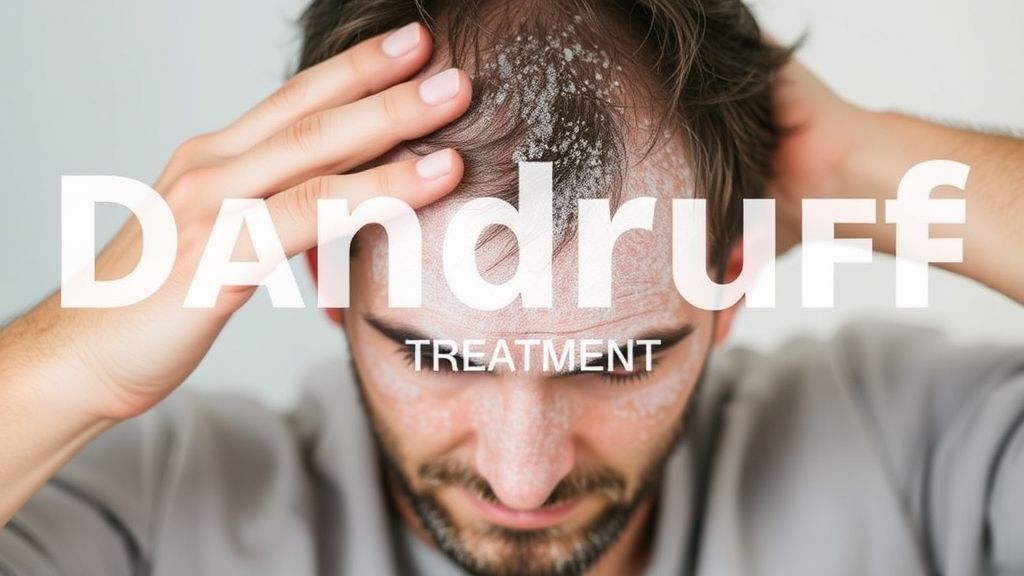Are you constantly brushing white flakes off your shirt? Is your scalp itchy, dry, or oily and driving you crazy? If yes, you’re not alone. Dandruff affects nearly half the population at some point in life. While it’s not dangerous, it can be incredibly annoying and embarrassing. Best Treatment for Dandruff
Good news? You don’t have to live with it forever. With the right routine, the right products, and a little patience, you can win the fight against flakes. So, what’s the best treatment for dandruff? Let’s dive in and break it down.
What Exactly Is Dandruff?
Dandruff is a chronic scalp condition that causes flaking of the skin on your scalp. It can be mild or severe and is often accompanied by itchiness, redness, or greasy patches.
Causes include:
Overgrowth of Malassezia yeast (a fungus found on the skin)
Dry skin
Oily scalp or product buildup
Irritated skin (seborrheic dermatitis)
Infrequent shampooing
Allergic reactions to hair products
Signs You Have Dandruff
Flakes of white or yellow skin on scalp, hair, or shoulders
An itchy or tight scalp
Red patches under hair
Greasy hair that doesn’t feel clean even after washing
Best Treatments for Dandruff
🧴 1. Anti-Dandruff Shampoos
Your first line of defense is a good medicated shampoo. Look for these active ingredients:
✅ Zinc Pyrithione
Reduces yeast and bacteria. Common in Head & Shoulders.
✅ Ketoconazole
An antifungal that directly targets the Malassezia yeast. Found in Nizoral.
✅ Selenium Sulfide
Slows down cell turnover and reduces yeast. Found in Selsun Blue.
✅ Coal Tar
Slows skin cell growth and reduces inflammation. Good for seborrheic dermatitis (e.g., Neutrogena T/Gel).
✅ Salicylic Acid
Helps remove flakes and prevents buildup. Often found in Neutrogena T/Sal.
🧖 2. Natural Remedies
If you prefer a more holistic route, try these:
🍃 Tea Tree Oil
Natural antifungal and anti-inflammatory. Add a few drops to your shampoo or use products that contain it.
🥥 Coconut Oil
Moisturizes dry scalps and has antifungal properties. Use as a pre-wash scalp mask.
🍋 Lemon Juice
Its acidity helps balance the scalp’s pH and reduce fungus. Massage diluted lemon juice onto your scalp and rinse.
🥒 Aloe Vera Gel
Soothes itching and reduces inflammation. Apply fresh aloe to the scalp and leave for 30 minutes before washing.
🧼 3. Proper Hair Washing Routine
Wash your hair regularly—at least 2–3 times per week with anti-dandruff shampoo
Rinse thoroughly to remove product and residue
Avoid using too much conditioner on the scalp
Don’t skip shampooing for long stretches—this leads to buildup and flaking
🧴 4. Scalp Exfoliation
Exfoliating your scalp once a week helps remove dead skin and product buildup.
Try:
DIY scalp scrubs (brown sugar + coconut oil)
Commercial exfoliating scrubs with salicylic acid or charcoal
Scalp brushes to gently lift flakes
💊 5. Lifestyle and Diet Adjustments
Sometimes dandruff is a reflection of what’s going on inside your body.
Eat more omega-3s, zinc, and vitamin B
Avoid excess sugar and processed foods
Drink plenty of water
Reduce stress, which can worsen dandruff flare-ups

⚕️ 6. When to See a Dermatologist
If nothing’s working after 3–4 weeks, or if your scalp is red, swollen, or bleeding, it’s time to consult a specialist. You may have: Best Treatment for Dandruff
Psoriasis
Eczema
Seborrheic dermatitis
Fungal infections
Prescription treatments like stronger antifungal shampoos, corticosteroids, or scalp lotions may be needed.
Best Dandruff Products to Try in 2025
| Product | Active Ingredient | Best For |
| Nizoral A-D | Ketoconazole | Persistent dandruff, fungal causes |
| Head & Shoulders Clinical Strength | Selenium Sulfide | Flaky, itchy scalps |
| Neutrogena T/Gel | Coal Tar | Seborrheic dermatitis |
| Tea Tree Special Shampoo | Tea Tree Oil | Natural alternative |
| The Ordinary Glycolic Toning Solution | Glycolic Acid | Exfoliating scalp treatment |
Common Dandruff Myths—Busted
❌ Dandruff only comes from a dry scalp.
Not always. Oily scalps and yeast can also trigger it.
❌ It means you don’t wash your hair enough.
Dandruff isn’t always about hygiene—it’s often a skin condition.
❌ You can cure dandruff forever.
You can control it, but it may return without regular treatment.
Conclusion
Dandruff may seem like a minor problem, but it can affect your confidence, comfort, and even your overall scalp health. The best treatment for dandruff depends on its cause—whether it’s dry skin, fungus, or something else.
Start with a trusted anti-dandruff shampoo, add in some natural remedies, stick to a consistent routine, and watch your scalp transform. If flakes persist, don’t hesitate to speak to a dermatologist—your scalp will thank you.
FAQs
1. How long does it take for anti-dandruff shampoo to work?
Usually within 2 to 4 weeks of consistent use. If there’s no improvement after that, try a different shampoo or consult a dermatologist.
2. Can dandruff be caused by stress?
Yes! Stress can trigger or worsen scalp conditions like seborrheic dermatitis, which leads to dandruff.
3. Is it okay to use anti-dandruff shampoo daily?
Yes, especially if your scalp is very flaky. Once it improves, you can reduce use to 2–3 times a week.
4. What foods help reduce dandruff?
Foods rich in zinc, B vitamins, and omega-3 fatty acids can support scalp health and reduce flakes.
5. Can dandruff cause hair loss?
Not directly, but excessive scratching or inflammation from severe dandruff can weaken hair roots and lead to temporary shedding.

